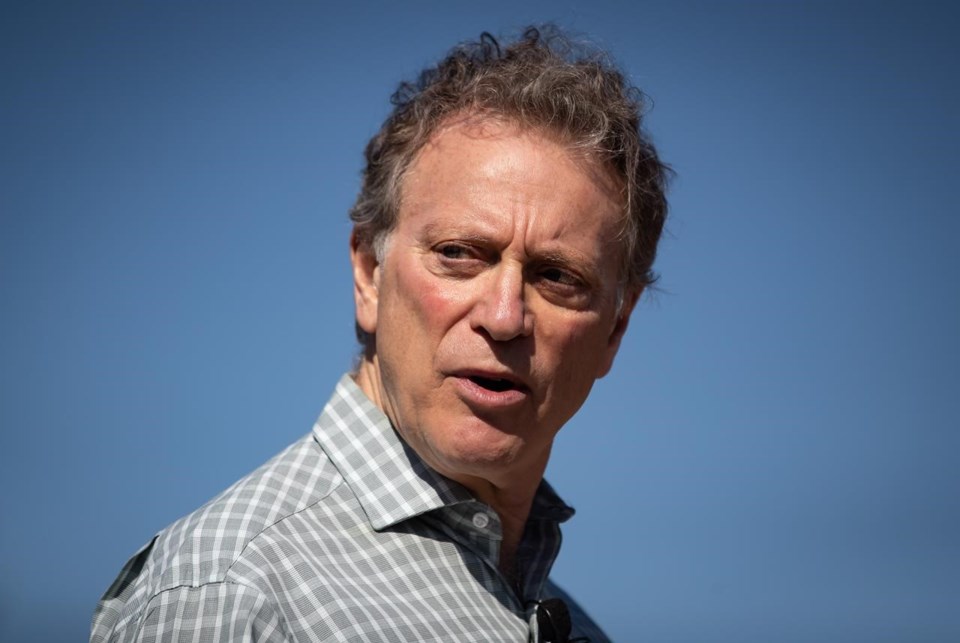VANCOUVER — A combination of 18 years of preparation, resourceful adaptation and a stroke of luck helped a small British Columbia community avoid being overrun by an aggressive wildfire last August, says its mayor.
Mayor Robin Smith of Logan Lake said she still gets goosebumps when she thinks about how close the community, southwest of Kamloops, came to being devastated by a wildfire.
The wildfire came within nine metres of the backyard of a house, and it was a shift in wind that prevented the home from being burned, she said in an interview.
While there are several factors that remain out of people's control, there are a lot of other steps that a community can take to ensure that the damage is minimized, Smith said.
At a news conference Monday, the government released its new strategy to get the province ready to combat extreme weather that can result in wildfires and flooding.
Environment Minister George Heyman highlighted Logan Lake's success.
"We know there is much work to do, and we know the anxiety many British Columbians are feeling about the levels of threats that we've simply never seen before," he said.
"But the climate preparedness and adaptation strategy sets us on a course to build a stronger, more resilient province for everyone."
The announcement comes after more than 600 people died when extreme heat settled over the province last June. A wildfire overran the community of Lytton the day after a Canadian heat record was set at 49.6 Celsius. Two people were killed.
In November last year, a series of atmospheric rivers brought record rains to southern B.C., washing away roads and bridges, flooding communities and killing five people in a landslide.
Smith said the community began its FireSmart preparation after a forester surveyed the area and warned them that as time went by it would be at risk for wildfires.
The community of about 2,000 people heeded his warning, raised money and received government funding to take steps to protect themselves.
The mayor said she understands that her community had the luxury of time to prepare and plan.
"I think our message is just to start somewhere, you know, even if it's in the planning, but you've got to start somewhere, do something, anything, just one step. And then the next year is something you just build on. Year after year. But you got to take that first step."
Logan Lake has a fire-protection sprinkler system that can set up as the fire encroaches, she said.
Last August, that system was used when the fire came near the boundary of the community, Smith said.
"Because of that little bit of extra humidity that we had, it was able to give us just a little bit of extra time that we needed for the wind change and to allow the air troops to come in and actually fight the fire," she said.
Heyman said the province's new strategy includes enhanced roles for the BC Wildfire Service to prepare and prevent fires.
The government is also working with First Nations to plan and prepare for climate-fuelled extreme weather, he said.
"We're expanding cultural and prescribed burning, doubling it over the next year by working with First Nations."
Other steps include creating a provincial flood strategy and an extreme heat preparedness plan.
Smith said Logan Lake is preparing for extreme heat this year by setting up cooling centres and looking at ways to provide transportation to and from these places.
Heyman said the government will invest more than half a billion dollars over the next three years to ensure the province is prepared to adapt to climate change impacts.
A non-profit group of environmental lawyers welcomed B.C.'s updated strategy, but warned that the plan fails to recognize the magnitude and true costs of climate impacts.
“The climate crisis requires immediate, urgent and massive action if we are going to minimize the impacts of future heat waves, wildfires, flooding, drought, sea level rise and other climate impacts,” said Andrew Gage, a lawyer with West Coast Environmental Law.
"B.C.’s new climate plan is a long overdue important step forward, but is still only a fraction of what is needed to keep our communities safe."
This report by The Canadian Press was first published June 20, 2022.
Hina Alam, The Canadian Press



